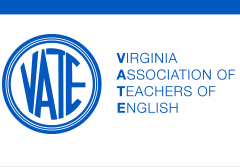Abstract
Students derive meaning from knowledge that is presented to them in various ways. An instructor may present information through different modalities, though direct verbal instruction is the mode most often employed (Beesley & Apthorp, 2010). Research indicates that, when information is constructed through the use of visual representations, students gain deeper and more enduring understanding of the content (Jewitt, 2008; Kress, 1997). This article provides an explanation and definition of nonlinguistic and linguistic visual representations, a review of what research indicates in the integration of them, and examples of the inclusion of concept-based visual representations in a college course that focuses on training pre-service teachers in literacy pedagogy.
Recommended Citation
Kelly, Courtneay
(2020)
"Let’s Get Graphic: The Integration of Visual Representations to Demonstrate Learning,"
Virginia English Journal: Vol. 70:
Iss.
1, Article 4.
Available at:
https://digitalcommons.bridgewater.edu/vej/vol70/iss1/4
Included in
Curriculum and Instruction Commons, English Language and Literature Commons, Language and Literacy Education Commons

